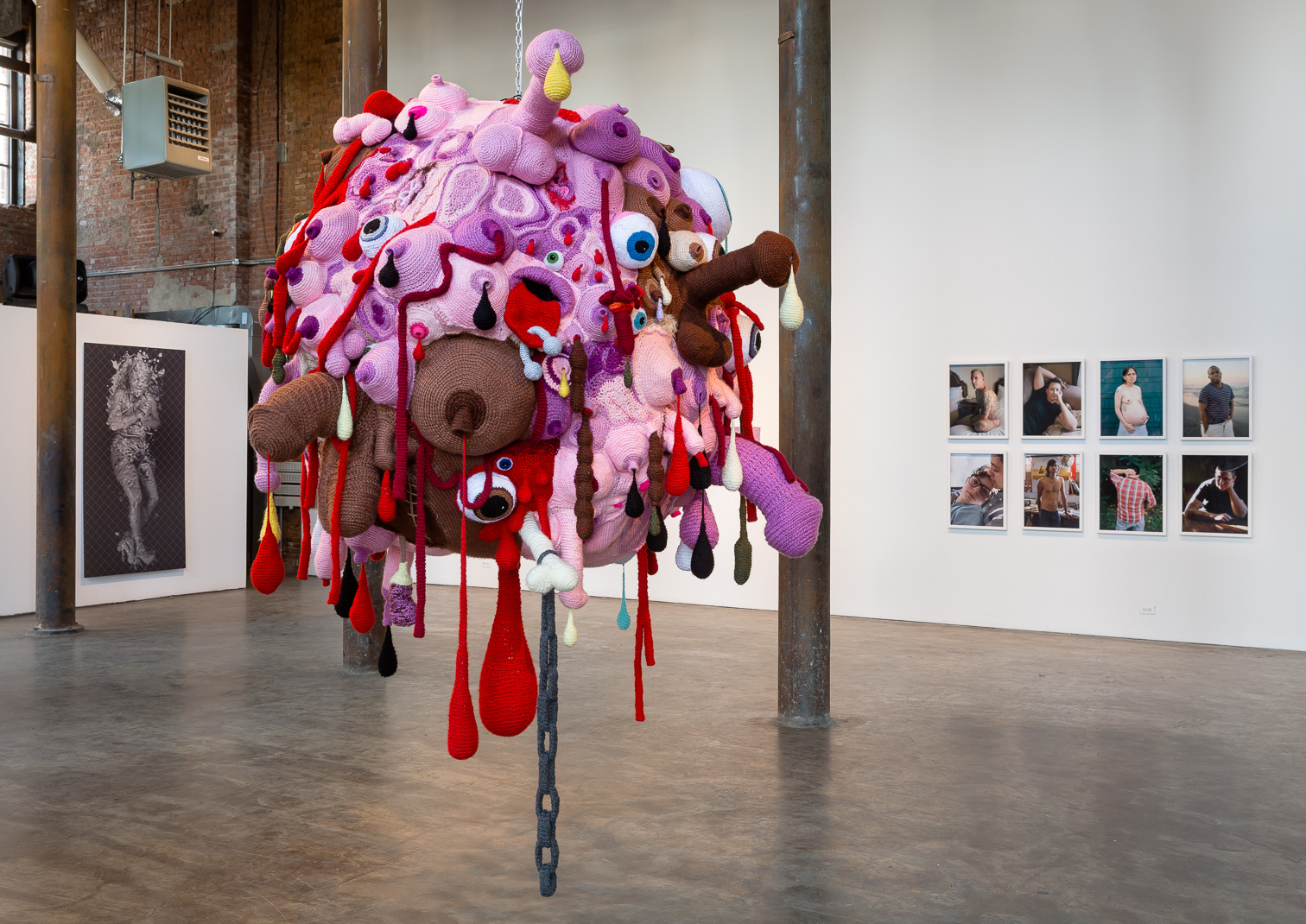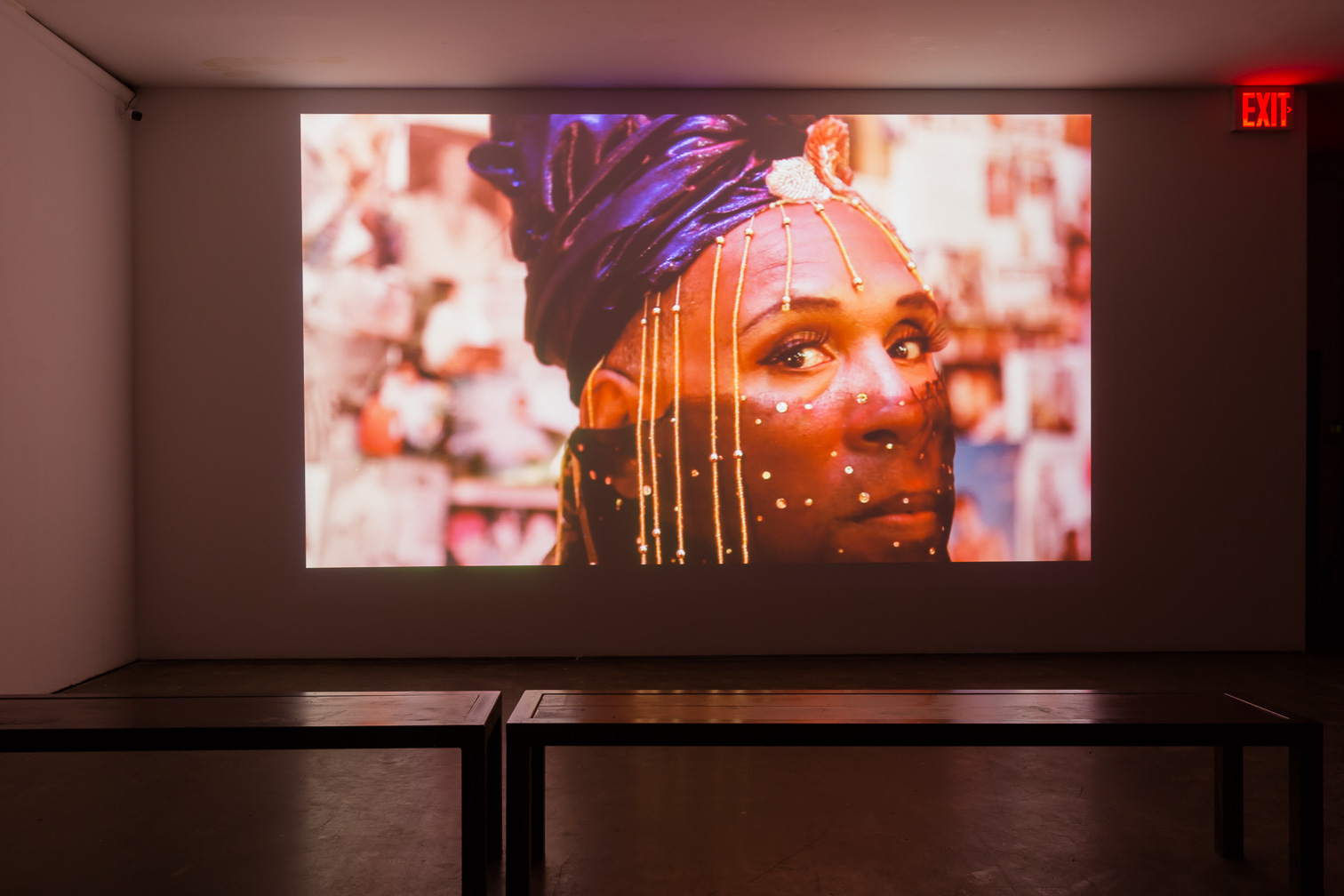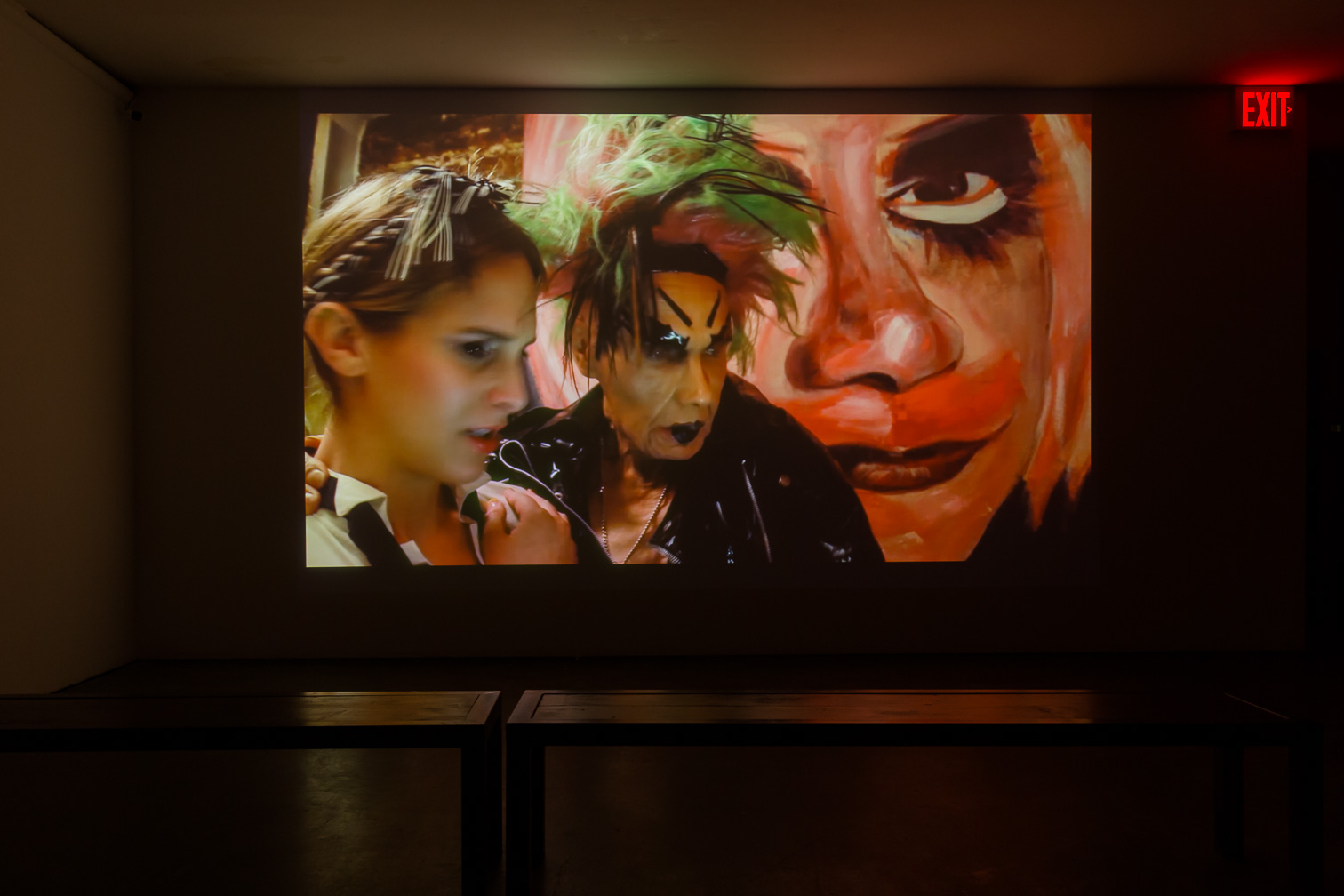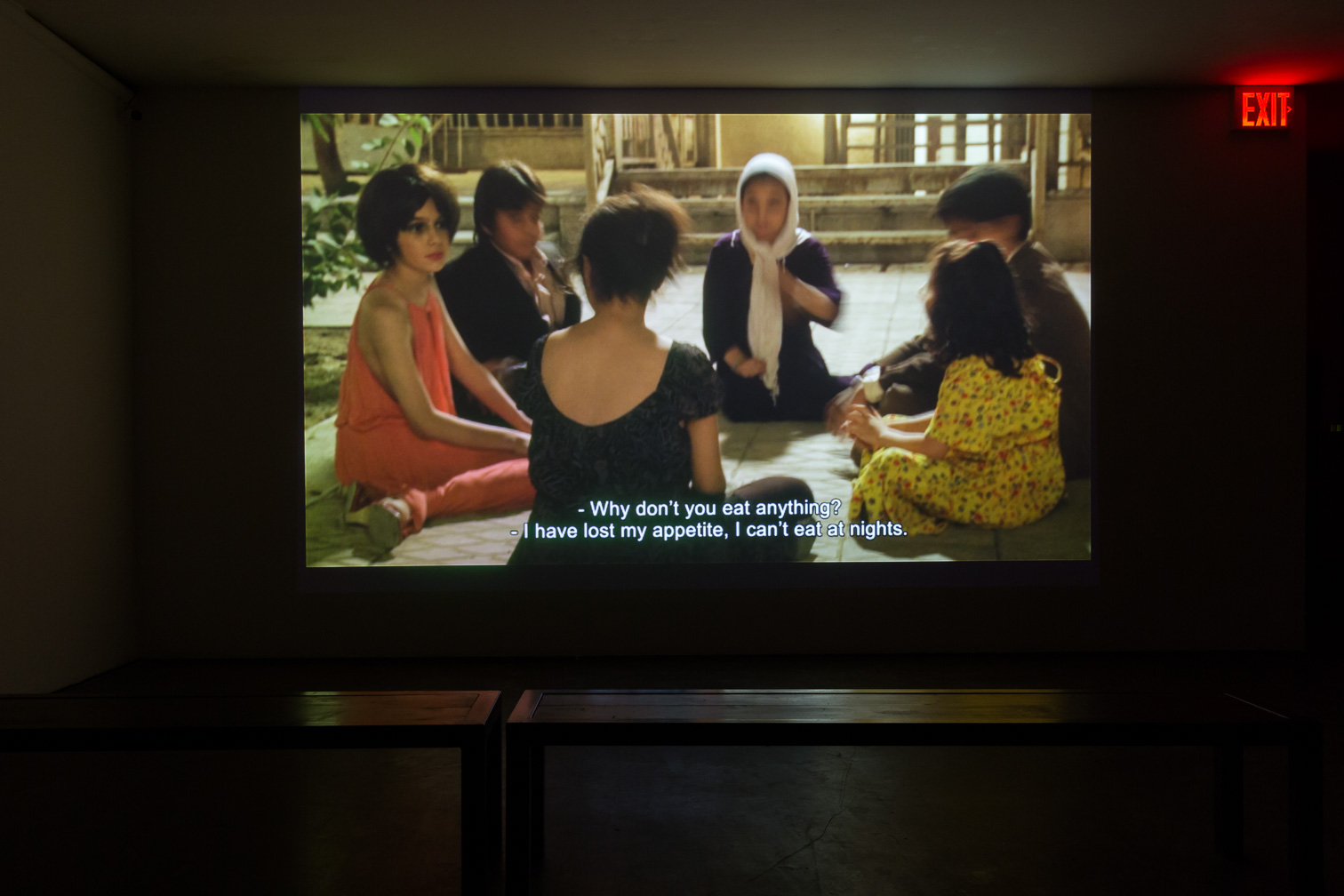(SIGNAL) is an interactive multimedia exhibit presenting artworks that challenge the gender binary, or if you will, the masculine-feminine duality. In a sort of raw, self conscious vérité-style approach, the exhibit unveils truth hidden behind plain reality, exploring a continuum of self-identity.

“The exhibition’s title begins as a starting point to explore what happens when the gender binary becomes illegible.”
11 artists utilize code, collaborative representation, fantasy, and play to subvert the varied and numbered mythologies that surround gender, and what some may call, gender fluidity. Together, their works question the authorship over ‘the natural,’ making a collective resistance to reimagine a future where identities are accepted as continuous and fluid.
Written in binary code by Chelsea Thompto, this composition of symbols translates into the word SIGNAL. The exhibition’s title begins as a starting point to explore what happens when the gender binary becomes illegible.

As for the curator, that adds another pleasantly unexpected layer of meaning. Curiously, (SIGNAL) is curated by Alexis Heller, a social worker turned curator. As the story goes, after working with queer youth communities in drop-in centers, foster care, shelters, and schools for over ten years, she found herself using art for youth expression and advocacy. She then began archiving these oral histories and launched a Tumblr to document them. It was then when Alexis was asked to make the online collection into a full scale gallery show. And, as they say, the rest is history.
Intrigued, we asked Alexis to tell us more:
Can you tell me about yourself, your background, and how you came to curate this exhibit?
I came to curating through social work, actually. I have been working in queer youth communities, such as foster care, shelters, drop-in centers and schools for over ten years. Back in 2009, frustrated by the deficit in funding to address LGBTQAI youth issues – particularly for homeless youth – I began to imagine ways for young people to make themselves heard, connect with one another, and build greater understanding/support in the larger community. Art seemed like a natural access point.
I started by collecting an oral history [for] over two years at Sylvia’s Place, an emergency shelter for queer youth in NYC, and later presented those stories as part of collaborative art installations at museums and schools. It proved to be a powerful tool for advocacy! I was inspired by what I saw as art’s ability to disarm and create space for communication; of self, within communities and between seemingly disparate groups.
With that in mind, I went on to launch TESTIMONY* on Tumblr in 2011. The project aimed to tell the story of what it’s like to be young and LGBTQAI all around the world, through submitted creative pieces and curated content. At that time, diverse reflections of queer youth life were less ubiquitous and it was exciting to create visibility, a place where a myriad of perspectives could be engaged at once. I had the amazing opportunity to mount TESTIMONY as a full scale exhibition at Leslie-Lohman Museum of Gay and Lesbian Art in 2012, as part of the All Out Arts Fresh Fruit Festival, and organized two subsequent shows** there in the following years.
“I’m driven to continue bringing marginalized perspectives to the forefront through art – in part because I locate myself within them.”
As I’ve grown as a curator, I have moved beyond ‘goal-directed’ storytelling, to a deeper practice of exploration. I’m driven to continue bringing marginalized perspectives to the forefront through art – in part because I locate myself within them. But, also in a culture that demands quick communication of everything, including identity, it feels important to contribute a slower dialogue in this way.

What were your initial ideas and or inspirations for SIGNAL?
When I was organizing (SIGNAL), I was really interested in the interrogation of communication around gender. As a social worker, by nature I am drawn to talking about and exploring the stories we are told about ourselves, and how those stories impact what we, in turn, tell ourselves and each other about who we are.
Transgender stories and issues have gained increasing exposure in the mainstream over the last few years, (albeit through a narrow lens), however with this show, I was interested in thinking beyond the narrative that holds transition as ideal.
What are the nuances of identity construction? What strategies of resistance have been employed to shift the gender story? To bolster survival? What are the possibilities and who had/has permission to imagine them? And also to consider what is at stake when marginalized identities become legible/palatable to the larger culture?

Any future projects in the works?
Yes! I am in the process of curating a (dream) exhibit on the history of queer sex work culture, explored through the lenses of activism, art and archive, that will open at the Leslie-Lohman Museum of Gay and Lesbian Art [sometime in the next few years].
(SIGNAL) will be on view at Smack Mellon through April 17, 2016. If you can make it to DUMBO, you should look into the coinciding events:
April 3rd, 2pm – GENDER/POWER: Composition IV, an immersive installation activated by live performance, movement and storytelling that poses questions about the dynamics of power in relationship to gender. Led by Kris Grey and Maya Ciarrocchi in collaboration with Becca Blackwell, massima desire, Sara Jimenez and Pamela Sneed with choreography by Sandra Parker and dramaturgy by Clarinda Mac Low.
April 7th, 7pm – Gil Yefman performs Tumtum in conjunction with DUMBO First Thursday Gallery Walk
April 16th, 6:30-8pm – Screening of Mike and Claire’s Perform and a performance by Aurel Haize Odogbo. Followed by a talk by Rona Yefman on her project My Brother and I, 1996-2010 and book signing to follow.
* TESTIMONY was launched as a part of an organization Alexis Heller founded called Coalition for Queer Youth. For more information about the TESTIMONY exhibit, please see the Huffington Post review.
** After TESTIMONY: A Living Exhibition of Queer Youth and before (SIGNAL), Alexis Heller curated After Our Bodies Meet: From Resistance to Potentiality and Queers in Exile: the Unforgotten Legacies of LGBTQ Homeless Youth at the Leslie-Lohman Museum of Gay and Lesbian Art.
(SIGNAL) is located at Smack Mellon Gallery in DUMBO
92 Plymouth Street, Brooklyn, NY 11201
Gallery Hours: Wednesday – Sunday 12PM – 6PM
